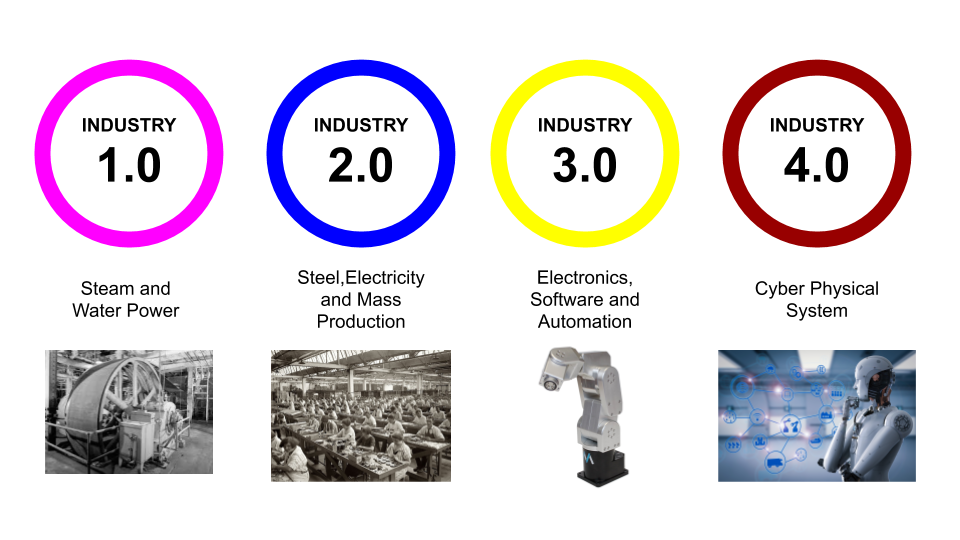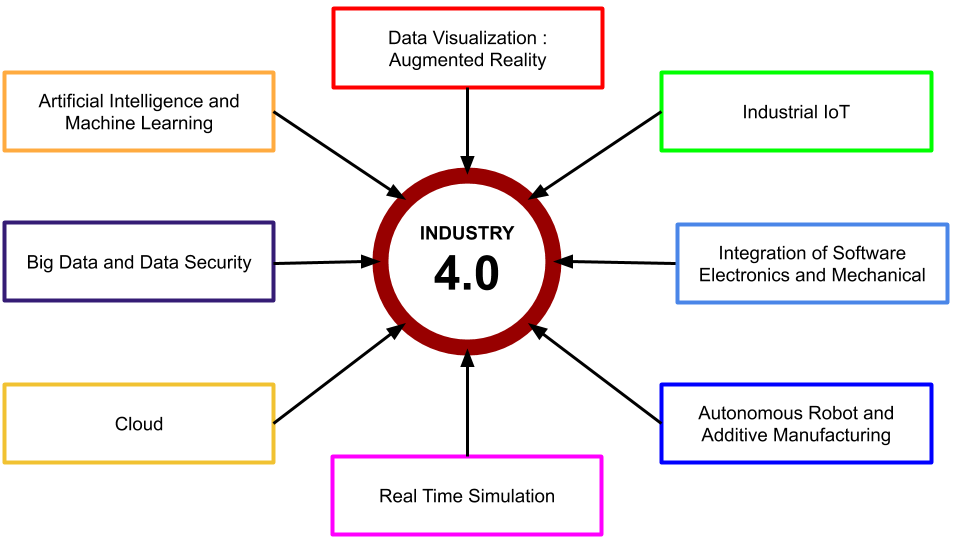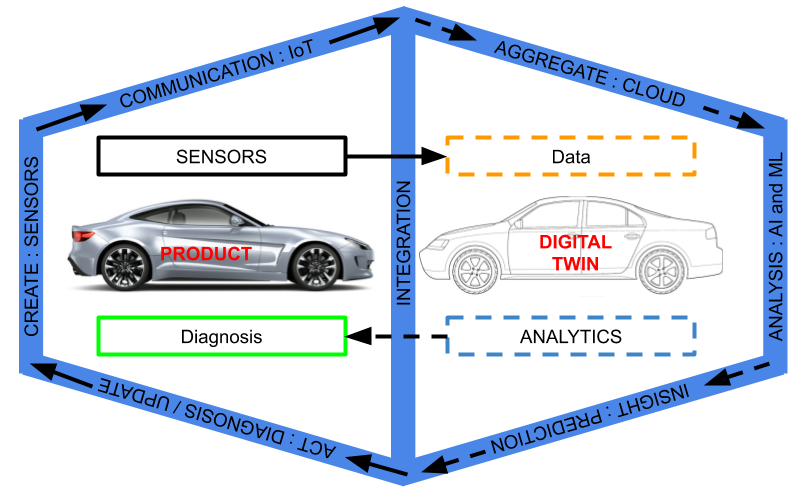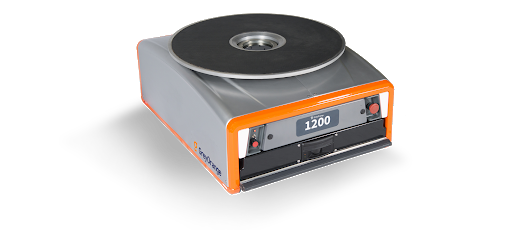What is Industry 4.0 ?
Industry 4.0 is used interchangeably with the fourth industrial revolution, where the digital transformation of industrial operation is done. In other words, All machines, raw materials, and industrial processes are connected using the internet of things.
The fourth industrial revolution will take manufacturing to a new level by introducing the concept of smart factories, producing smart products using flexible mass manufacturing technologies.
Inside smart fully automated factories machines will operate independently. This will lead to high productivity, low cost, and quality products. Industry 4.0 will change the way companies do business, interact with their customers & suppliers and manufacture their products.
Brief History About Industrial Revolution
To understand industry 4.0. Firstly we need to go to history to understand how the manufacturing Industry evolved from the first to fourth industrial Revolution.

First Industrial Revolution
Before the 1st industrial revolution, most of the industrial work was done manually or aided by animals. The First Revolution was started in the 18th century.
During this manual tasks were replaced by the use of steam engines and other machines. The agriculture and textile industry benefited most from the first industrial revolution.
Second Industrial Revolution
The Second Industrial Revolution was started with the use of steel and electricity inside factories. It started at the end of the 19th century and early days of the 20th century.
During this era, Factories were electrified. As a result, productivity increased and mass manufacturing concepts also came into the picture. The development of railway networks also enabled the transportation of goods from one place to another faster.
Third Industrial Revolution
The Third Revolution was started in the mid of 20th century. Most of our today factories are the result of the “Third Industrial Revolution”. During this time the manufacturer started to incorporate electronics, digital technology, and automation inside the factory.
Fourth Industrial Revolution
Now we are living in the era of the Fourth industrial revolution or Industry 4.0. Nowadays in Advanced factories, automated machines and robots are aiding the human workforce to do manufacturing activities.
But this is just a start. Industry 4.0 will take manufacturing to a new level by introducing the concept of smart factories, producing smart products using flexible mass manufacturing technologies. Inside smart fully automated factories machines will operate independently.
How Industry 4.0 Works?
Cyber-physical systems are a key to industry 4.0. Smart factories utilize the internet of things to connect smart machines, materials, and processes to the internet. These machines send real-time data to the cloud.
In the cloud, this data is processed using machine learning algorithms. Processed data is sent back to smart machines where the modern control system controls the machines and robots to manufacture parts automatically.
In this way, high productivity can be achieved without having any impact on product quality. The ultimate goal of smart factories or industry 4.0 is to manufacture products without human intervention.
Driving Technologies for Industry 4.0
Following technologies is the driving factor for the fourth industrial revolution:
- Integration of Software, Mechanical, and Hardware Technologies.
- Autonomous Robots and Smart Machines
- Industrial Internet of Things
- Data Analysis: Artificial Intelligence and Machine Learning
- Big Data
- Cloud Computing
- Additive Manufacturing Technologies
- Real-time simulation and Product Design
- Digital Twin
- Data Visualization

Here are the details on how various technologies are driving the industry 4.0 Revolution.
Integration of Software Electronics and Mechanical Technologies
Nowadays, machines are smarter because of the integration of various technologies. For example, In the past Cars were supposed to be a mechanical piece of technology.
But now integrating all technologies (mechanical/electronics and software) is making autonomous vehicles a reality. Similarly, the integration of these technologies is driving industrial automation to make industry 4.0 a reality.
Autonomous Robots and Smart Machines
Autonomous robots and machines are used to completely automate manufacturing and transportation processes. These robots can finish specified tasks without any human intervention. For example, in warehouse robots are used to transport goods from one place to another.
Industrial Internet of Things
Industrial IoT connects machines to the internet. Therefore machines can send real-time machine data to the cloud. Where machine learning algorithms can analyze real-time data.
This Real-time data can be monitored from anywhere. In this way, Industrial IoT is driving Industry 4.0 by connecting machines to the internet.
Data Analysis : Artificial Intelligence and Machine Learning
The ultimate aim of artificial intelligence is to make machines think like human beings. Machine learning is a subset of Artificial intelligence. When machines will think like humans, they can make decisions of their own.
Therefore Artificial intelligence can help in creating autonomous machines. That is one of the driving factors for the fourth industrial revolution. Read this article to know the difference between artificial intelligence and machine Learning.
Big Data
Big Data is large and complex data from IoT devices. A smart factory generated a lot of data from:
- Machine Sensors
- Digital Twins
- ERP System
- Marketing Data etc.
With the help of machine learning algorithms and visualization techniques. This collected data is converted into tangible inputs for business owners.
Cloud Computing
Smart factories connected with sensors generate lots of data. This big data is very difficult to handle manually or locally. Cloud computing is used to store and process this large data on remote servers. Therefore companies can use computing power and storage without any need to manage computer servers. Cloud computing provides users the flexibility of scaling without any large initial investment.
In this way, cloud computing is encouraging companies to move towards smart factories because of low initial investment and large scalability.
Additive Manufacturing Techniques
In smart autonomous factories (Industry 4.0), 3D printing is emerging as a future technology of manufacturing. Additive manufacturing does not require various complex manufacturing operations. Where parts need to be handled many times.
3D printing creates parts layer by layer. In recent days 3D printing is used for rapid prototyping only. But it is improving with time.
Real Time Simulation and Product Design : Generative Design
In generative design, design constraints are provided to generative design tools. As an output, it gives various design options along with their simulation results.
These tools are in the initial development stage and will take time to become more accurate. In this way, future factories can design products without human intervention.
Digital Twin

Digital twin technology creates a digital replica of machines or systems. This technology will be used to create digital replicas of future factories.
In this way, complete factories can be monitored in real-time. This will aid engineers in improving their existing and future designs continuously. Click here to know more about digital twin technology.
Data Visualization : Augmented and Virtual Reality
Augmented and Virtual reality enhances human senses by bringing the real and virtual world together. Now a lot of data is available and engineers are working on more complex systems. Therefore AR and VR technologies aid engineers in visualizing big data and understanding complex systems. Click this link for details on augmented and virtual reality technology.
To sum up, the latest technologies such as artificial intelligence, cloud computing, Robotics are opening a lot of new opportunities for future factories and aiding the fourth industrial revolution. Industry 4.0 is completely changing the way companies do business. It will also help in increasing overall productivity and reduce cost.
We will keep updating information on the fourth industrial revolution. Share your suggestions, comments, and questions on industry 4.0 in the comment box.


Add a Comment